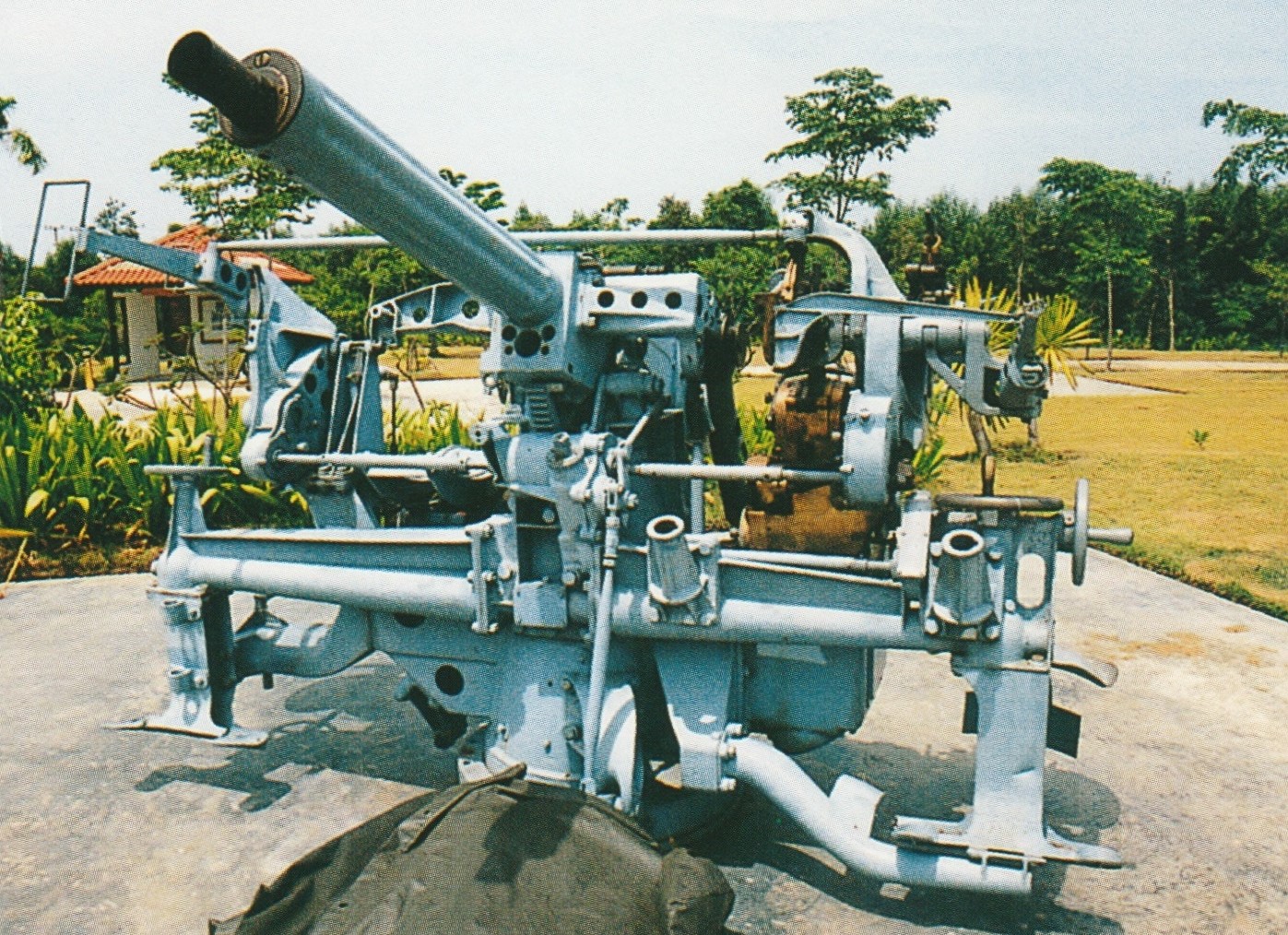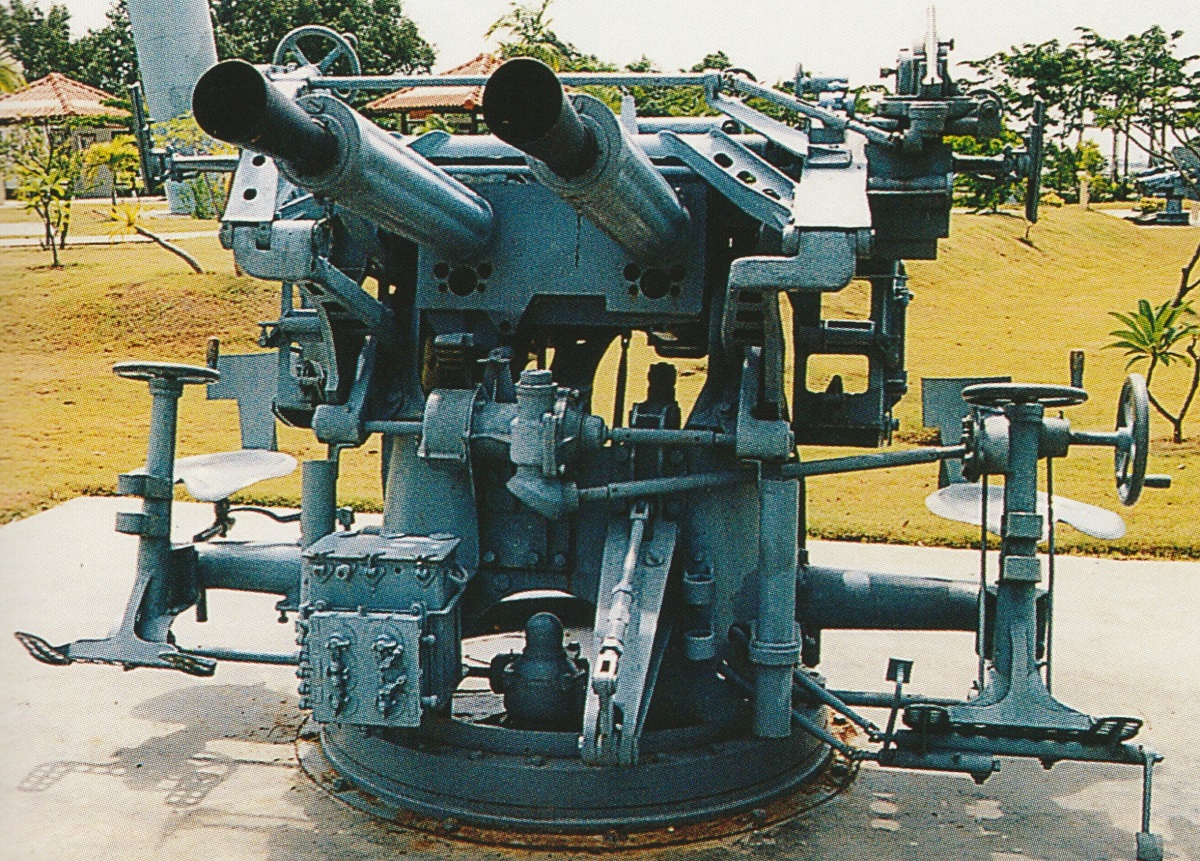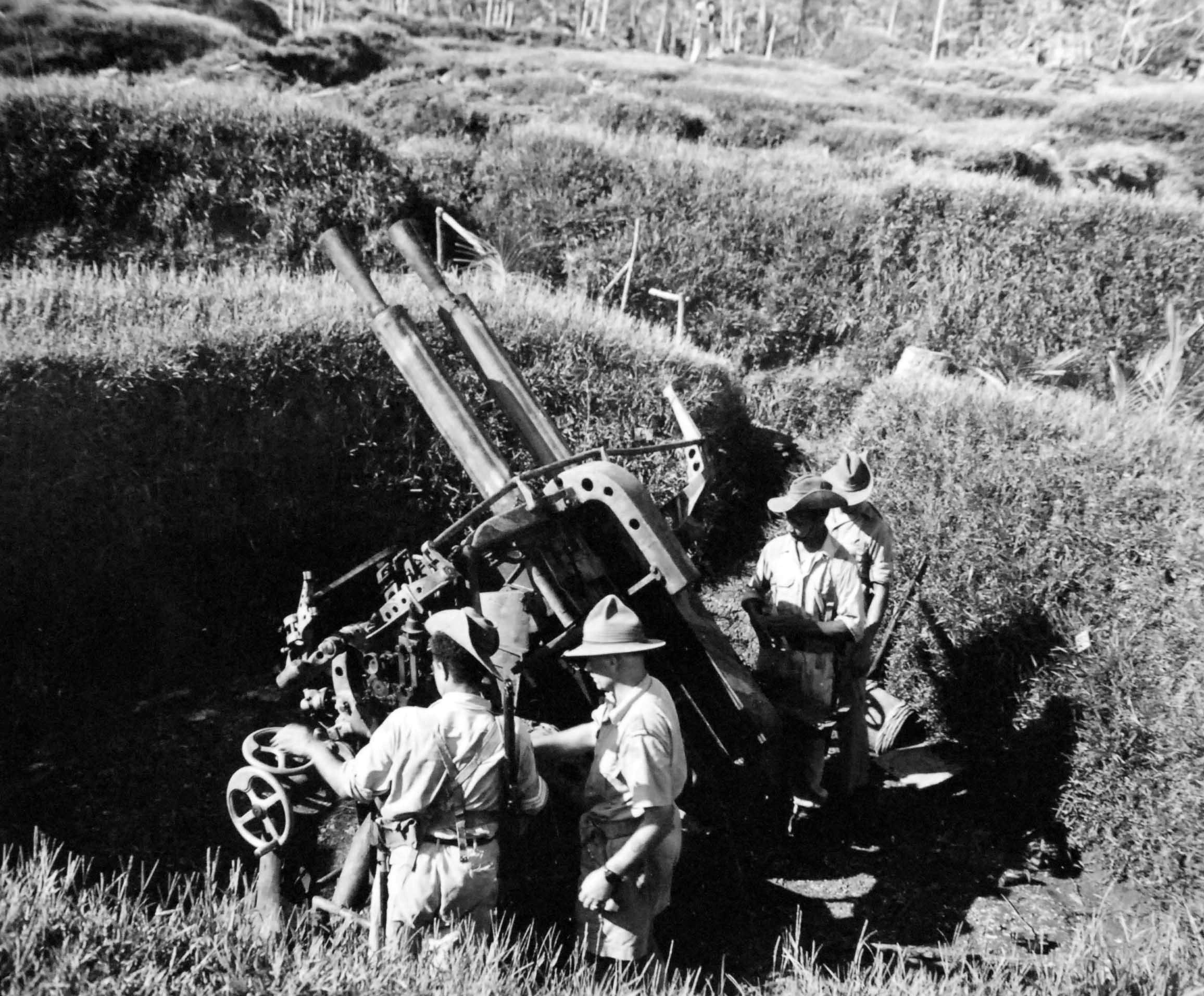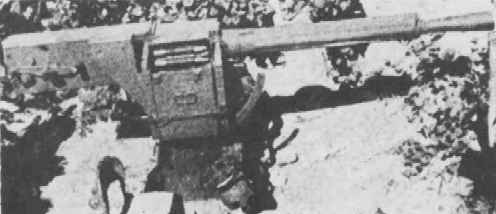This weapon was a Vickers design based on the British 2-pdr. Mark II and used on single and twin mountings similar to those used for the British mountings. About 500 guns and 200 mountings were imported from Britain from 1925 to 1935. Used a 50 round belt although an unsuccessful attempt was made to increase this to 100 rounds.
Like all Vickers 2-pdr. guns, this weapon had a low muzzle velocity and a short effective range. For that reason, these guns were replaced on most warships starting in 1935 by the Hotchkiss 25 mm gun.
Although this weapon was classified by the Japanese as being 62 calibers long, this dimension was actually the overall length of the weapon. True bore length of all Vickers 2-pdr guns was 39.37 calibers. The Japanese "BI" designation for Vickers guns is also translated as "HI" in some accounts.
| Designation | Vickers 40 mm/62 "BI" Type 91 (1931)
Official Designation: 62 Caliber Type 91 40 mm "BI" Gun |
|---|---|
| Ship Class Used On | Many ships 1925 to 1935 |
| Date Of Design | about 1923 |
| Date In Service | 1925 |
| Gun Weight | 619.5 lbs. (281 kg) including cooling water |
| Gun Length oa | 98.5 in (2.502 m) |
| Bore Length | 62.0 in (1.575 m) |
| Rifling Length | 54.84 in (1.293 m) |
| Grooves | (12) 0.0141 in deep x 0.322 (0.358 x 8.18 mm) |
| Length Of Rifling | 54.84 in (1.293 m) |
| Twist | Uniform RH 1 in 30 |
| Chamber Volume | 9.98 in3 (0.165 dm3) |
| Rate Of Fire | 200 rounds per minute cyclical
60 - 100 rounds per minute practical |
| Type | Fixed |
|---|---|
| Weight of Complete Round 1 2 | Com: 2.95 lbs. (1.34 kg)
CP: 2.95 lbs. (1.34 kg) |
| Projectile Types and Weights | Com: 2.0 lbs. (0.9 kg)
CP: 2.0 lbs. (0.9 kg) |
| Bursting Charge | Com: 0.16 lbs. (0.071 kg)
CP: 0.05 lbs. (0.023 kg) |
| Projectile Length | N/A
Complete round: 11.995 in (30.47 cm) |
| Propellant Charge | 0.243 lbs. (0.11 kg) |
| Cartridge | 40 x 158R |
| Muzzle Velocity | 1,969 fps (600 mps) |
| Working Pressure | 15.5 tons / in2 (2,440 kg / cm2) |
| Approximate Barrel Life | 5,000 rounds |
| Ammunition stowage per gun | N/A |
- ^The Japanese did not use the British 2-pdr. HV projectile, their Common (Com) projectile was equivalent to the older LV projectile.
- ^Common projectiles purchased from Vickers used fuzes which had both time and impact functionality. The single mountings purchased from Vickers used the same fuze-setting mechanism as used on the British 2-pdr. mountings. See 2-pdr Mark II - Dual Action Fuzes for details. It is not known if the Japanese produced their own projectiles with Dual Action Fuzes.
| Elevation | Distance |
|---|---|
| Maximum Surface | 6,340 yards (5,800 m) |
| Action Range | 3,830 yards (3,500 m) |
| Effective Range | 2,190 yards (2,000 m) |
| AA Ceiling @ 85 degrees | 13,110 feet (4,000 m) |
Some of the references below credit this gun with a maximum range of 13,000 m (14,220 yards). This seems improbably long for this weapon - for comparison, the much more powerful 40 mm/60 Bofors had a max range closer to 11,400 yards (10,000 m). The "Maximum Surface" and "AA Ceiling" figures above come from US Naval Technical Mission to Japan report O-47(N)-1 and seem more probable but still long. The above "Action Range" and "Effective Range" values come from "Japanese Cruisers of the Pacific War" but again these ranges seem long. The British considered that the "Maximum Effective Range" of the 2-pdr. LV was 1,200 yards (1,100 m) and that the "Maximum Range" was 3,800 yards (3,475 m).
| Designation | Single and Twin Mounts |
|---|---|
| Weight | Single Mount: 1,455 lbs. (660 kg)
Twin Mount: 5,190 lbs. (2,354 kg) |
| Elevation | -5 / +85 degrees |
| Elevation Rate | Manually operated, only |
| Train | 360 degrees |
| Train Rate | Manually operated, only |
| Gun recoil | N/A |



Images at The Vickers Photographic Archive
"Big Gun Monitors: The History of the Design, Construction and Operation of the Royal Navy's Monitors" by Ian Buxton
"Naval Weapons of World War Two" by John Campbell
"World War II Fact Files: Anti-Aircraft Guns" by Peter Chamberlain and Terry Gander
"Japanese Cruisers of the Pacific War" by Eric Lacroix and Linton Wells II
"Anatomy of the Ship: The Heavy Cruiser Takao" by Janusz Skulski"
"All about Japanese Naval Shipboard Weapons" by Yamamoto Yoshihide and Yoshihara Ganya
---
US Naval Technical Mission to Japan report O-47(N)-1: Japanese Naval Guns and Mounts-Article 1, Mounts Under 18"
---
"Q.F. High Explosive 2 pdr Mark II N Shell - Forged Steel with Fixing Screw. Design." No. 21,071.c.(1) / A.D.G.S/3/164 dated 24 February 1916
---
Special help from Anthony G. Williams, David Chessum and Paul Roome
09 April 2007 - Benchmark
27 May 2012 - Updated to latest template
02 December 2015 - Changed Vickers Photographic Archive links to point at Wayback Archive
17 March 2017 - Converted to HTML 5 format and corrected range table
20 January 2019 - Corrected typographical error
16 March 2019 - Added link to Britain 2-pdr. Mark II Dual Action Fuzes
02 October 2022 - Added photographs of single and twin mounts in Thailand

